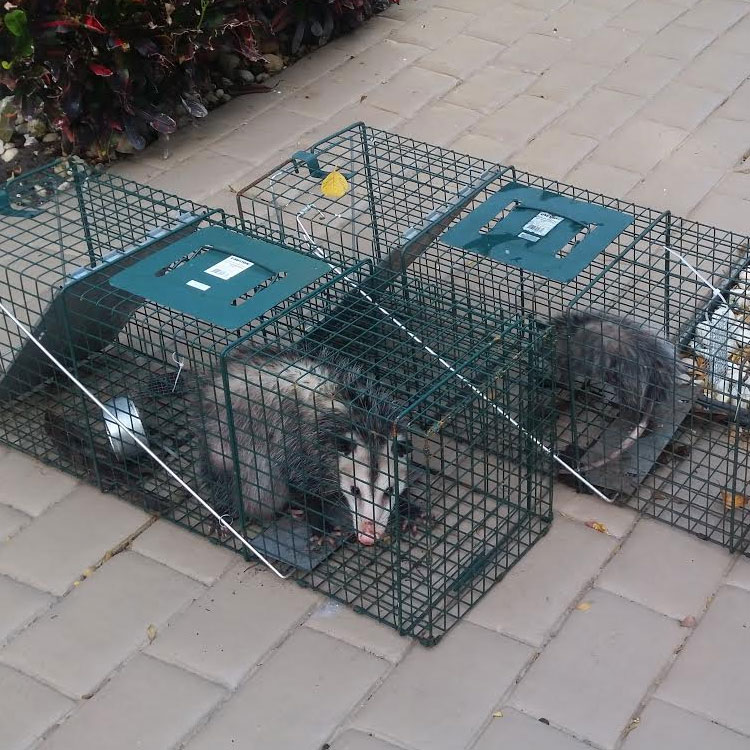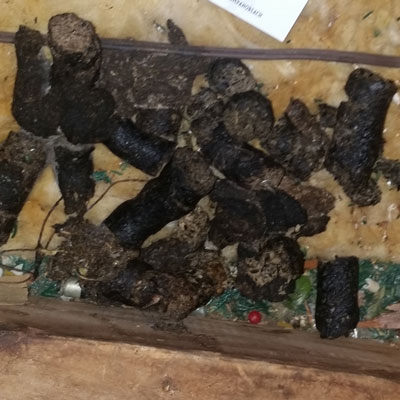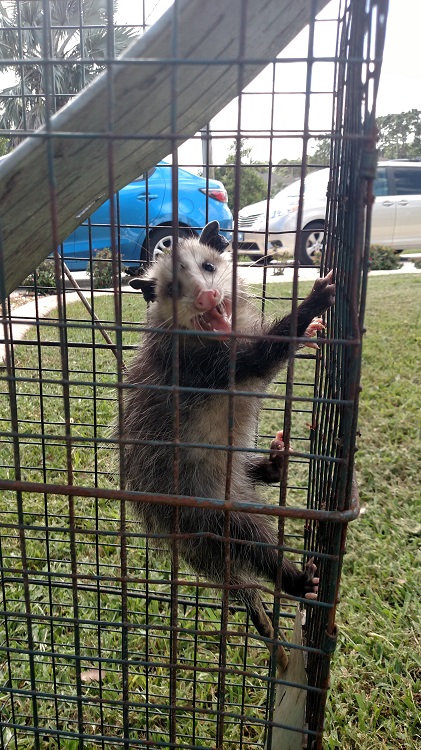DIY Possum Control Guide

Hi my name is Brendan Mangnitz, I have been in the Nuisance Wildlife Removal industry now for nearly 6 years since I graduated from College at UF with a background in Entomology and Wildlife Biology. I have seen and controlled just about any wildlife issue you may think of. I have dealt with possums in apartments complex, possum removal from RV Homes, possums in the Attic, possums digging up yards, possums in Pools, possums stuck in Chimneys, and the list goes on and on. I have used several different control and removal methods for possums and that’s what I want to share with you guys on our website here at CenturianWildlife.com.
Ok lets first start this fun article off with some Facts about our Furry Marsupial Friend, and anser the question we all have been wondering: Which Came First, the Opossum or the Possum?
In North America, we know the opossum as an adorable, fuzzy, four legged creature. Its bright eyes commonly startles drivers at night on dark streets. Others meet the dark bandit on a routine trip to the garbage can. Many zoos in America house the creatures for onlookers to observe behaviors in their simulated natural habitats. The opossum is easily recognized by its pointed snout, pink nose, hairless ears and tail, and a nearly white face.
The opossum is the only marsupial living in the Northern Hemisphere. During their young’s infancy, the “Jill” (the common name for a mother opossum) carries her “joeys” (the common name for the infant opossum) for up to 2 months in her pouch. (The father opossum is known as the “Jack.”) Once the little pink bundles of joy reach about 2 months old, the Jill will carry her Joey’s on her back for another month. Once the opossum reaches adulthood, it will live approximately two years in the wild.
One remarkable behavior of the opossum is its reaction to danger. When threatened, the cunning animal will “play dead” to deceive a predator. Its mouth will foam, saliva will flow and it will bare its teeth. Not only will it play dead, it has the ability to release an odor that simulates the smell of a dead animal. As kids, we all played possum at some point, pretending to be asleep when we were not. It’s a good thing humans do not have the ability to release that same odor of death. Our moms would have been scolding us while throwing the bedsheets in the washer!
In North America, many omit the “o” when pronouncing this creature’s name. In fact, there is actually a creature called the “possum” that lives in Australia and surrounding islands. It looks similar, but it is a completely different species. This fuzzy, four legged creature is found in four different colors: silver-gray, black, brown and gold. The ears and eyes are bigger and the tail is bushy on this Australian inhabitant. The possum also has a smooth coat, as compared to the bristly hair found on the opossum.
While the behaviors are identical, the use of “opossum” or “possum” refers to a 2 completely different animals. The botanist Sir Joseph Banks explored Australia and its surrounding islands in the late 1700s. He noted that that this creature resembled the North American opossum and called it “possum.” There you have it. The opossum came first.

The first Possum Control and Opossum removal topic to address, is why are we having this problem with possums at our home or in our attic? Well the answer is actually a lot simpler than you would think. Long before your home or office building was there, possums had free range of the land. Possums are wildlife animals, they are used to living around trees, forest, bushes, shrubs etc. But as we have populated and continued to grow we have moved into their setting. We have taken away the possum’s natural setting and replaced it with homes, HOA’s, Apartment complexes, Malls, just regular growth and construction. Well by doing this we have created a hand full of OPTIMAL settings for possums and nuisance wildlife. As humans we create garbage, mess, waste, all of this creates additional food for possums. So now you take their natural setting of a forest, replace it with homes, and then add food. Well what do you think the possums are going to do? THRIVE! And that is what they are doing we are providing the possums with an abundant amount of food, our trash, and we are desensitizing them, meaning they no longer have to hunt and be resourceful to eat and stay alive, but just the opposite. All they have to do is knock our trash can over and buffet!
Well now let’s talk about why the possums are getting into your attic. It’s simple, the attic is a PERFECT place for the possums to create a shelter. It’s hot, it’s nice and comfy with the insulation, there are no outside elements like rain or wind so they are protected, and best of all, there are no predators or enemies. If I was a possum I sure would rather live in an attic then a tree! So you take the perfect conditions of your attic as a shelter, then you add your trash cans right on the outside of the home, and you just gave the possum all the things that they want to live. Why would they ever want to leave your residence? Free Rent, Free Buffet, Cozy bed, and that’s why you have possums in your attic or rummaging around your lawn and home.
How to fix your possum problem with 10 Simple Steps for Effective possum Removal & Control
1st step is to Identify that you do indeed have the problem. Is your yard being torn up by possums? Are you hearing REALLY really loud noises in the attic? Are your trash can being knocked over every night and trash spread out all over your yard? Well if you have the tell-tale signs of a possum infestation then keep reading. What I normally like to do and tell my customers when they suspect that they are dealing with a nuisance possum is document it. So make sure it is a possum, since all animals’ removal method is different.
Check the property and lawn for fresh Feces: Are you seeing possum poop your yard, do you see poop on your roof or in your pool? Are you seeing possum paw prints on your trash can, on the wall, on the pavement, do you see possum tracks? Are the possums digging up the yard? Confirm the activity on the exterior is indeed possums. The next step that you are going to want to take is to see if they have made it into the attic or not. You will not always hear possums in the attic. They can be agile, they can be quiet, and possums in the attic are not always loud. So what you are going to want to do is get into the attic and perform and inspection. Any time you think that you have animals in the attic, especially possums in the attic, you want to be 100% careful and safe. If you do not feel safe or do not want to take the chance call us and we can talk to you over the phone and even do an inspection for you or send you one of my inspectors to help out. I recommend hiring a possum removal specialist for safety reasons, but if you do want to do the inspection then continue reading?
Anytime that you enter an attic for possums there are a few things that you need to keep in mind. possums are dangerous, they are territorial, they are Nasty and have tons of bacteria, so you want to make sure you are prepared. Possum feces is one of the most Bacteria infested feces that we deal with on the regular so you will want to make sure you wear a respirator like the one on the left. There are a few issues with possum feces that I will touch on to make sure you are protected, get it removed, and the attic and your home is contamination free.
Wildlife are known to carry many different zoonotic diseases, meaning they can be transmitted to humans. We will discuss each of those in detail. We are not intending to scare you by discussing the diseases associated with possums, but feel you should be informed of the health risk to you and your pets. The following is a list of some of the zoonotic diseases that you and your pets could be exposed to from wildlife in your attic. To Learn more about these Diseases go to the Opossum Disease Page.
- Leptospirosis
- Canine Distemper
- Roundworm
- Baylisascaris
So with all these Diseases and Bacteria MAKE SURE YOU WEAR YOUR RESPIRATOR AND MAKE SURE YOU STAY PROTECTED AND REMOVE ALL THE BACTERIA POOP AND CONTAMINATION FROM YOUR ATTIC.
Next step once your lungs are protected you will want to make sure you wear safety glasses and gloves. Go ahead and take out your flashlight and do an inspection remember to walk on the beams in your attic, you don’t want to fall through the attic like my buddy James did when he was doing an inspection. Walk around the attic and look for the evidence of a possum infestation. Do you see possum poop do you see urine, do you see possum trails? If you do then you can confirm that you are having an issue with possums in the attic. If you do not see any of the sign, great, you caught the issue before it became a real big problem. Either or what you are going to want to do is continue ready for the steps below for how to trap and remove the possum from your attic, lawn or property. Then next you will want to close off any of the openings on the home to prevent future possums from coming back. If you do not have them in the attic but just on the lawn you still want to close off these openings or access points otherwise it’s only a matter of time that the possum will want to explore and go into your attic. It's always a good thing to be proactive and preventative when dealing with possums. The damage and destruction possums can cause can get into the $1000’s of Dollars.

Ok so Next Step: Removal of the possum: Trapping! Trapping is the most successful and humane way to remove possums. There are deterrents for possums that you can use, and I will discuss tools to trap possums, but in all honestly the best way to remove possums is to Trap them. I prefer Havahart possum Traps. You generally want to buy and use 2 traps when dealing with possums in case there are several in the area. You want to put the traps around the property where you are seeing the signs of a possum infestation. So put the traps around the garbage, put them on the areas on the lawn where you are seeing the activity. Once you have determined the correct place for the possum traps you will want to set those possum traps.
Next you will want to make sure that you properly bait the possum trap. There are several different baits you can uses. Try with just some trash from your trash can, that’s what they are sued to. You can use cat food, since also r of urban possums are used to stealing cat food from neighbors that leave cat food out. This is such a bad idea fyi all you are doing is attracting cats and other animals and wildlife to your home. Rats, squirrels and possums will eat cat food. So if you have cat food lying around you are only attracting possums get rid of it. Here is what I generally do for possum trapping: Note- Sometimes possums are smart enough to steal the bait from the traps by reaching through and grabbing handfuls of bait without setting it off. They will also flip the traps. If you run into this, there are a few tricks you can use to fool them.
Stake the traps down in the ground with Rebar stakes. It will prevent them from being able to flip the trap. Take the Honeybun, Marshmallow, etc and wrap it in Hardware cloth. You can use the wire that is wrapped around the hardware cloth to hang the wrapped bait from the roof of the trap above the trip pan. They get frustrated that they can’t just grab the bait and will sit on the pan.
Live possum Trapping and removal can take some time. I generally give it a total of two weeks trapping from start to finish until I catch all the possums. Normally possums travel in pairs or groups, so even if you catch just one possum I would recommend keeping the possum traps out there for a extended period of time. Be patient, give it time and don’t mess with the traps. Let the bait sit there for a few days and try to catch the possum. Bait will normally stay good for about 72 hours depending on weather conditions, but remember possums are used to eating trash, so the possum will not be picky if it smells a little.
handling baby possums
Next Step: I caught the possum what do I do next?? Simple – Humanely relocate the possum. Possums have a great sense of smell and direction. So when you caught the possum you will want to make sure you relocate it from far away from your home. 25 miles or so should do the trick. Every state and county is different, you will want to contact your local wildlife management agency like fish and wildlife commission and get their state statutes on relocation. Generally it’s a 40 acre plot of land where you have written consent from the owner. You want to relocate the possums to an area that you know they will thrive in and be safe. Examples of good areas would be like wildlife management preserves, forests, areas that are their natural habitat.
When you have the animal in the trap you want to make sure that you handle the animal safe. DO NOT put your fingers in the trap, do not mess with it, the animal can scratch or bite you which would then be a rabies scare to cause you to need to go and get tested. What you need to do is buy good Kevlar Glove like these and these are rated for animal handling. If you caught the animal the law states that the animal has to be released from the trap within 24 hours of the possum being caught. The sooner the better for the longer that the animal is in the trap the more it will suffer. We want to focus on humane and safe animal trapping.
Traps have a handle on the top of the trap and a safety plate. You want to grab the handle of the trap, NO OTHER AREA of the trap. The possum may try and stick its arm out the trap that is why you want to wear the Kevlar animal handling gloves and only hold the handle. Be careful when you are holding the trap, don’t keep it to close to your legs or it may reach out and try to grab your legs or shoes. Be very safe when holding the trap and transporting the animal.

Finally when you have chosen the area in which you are going to want to relocate the possum you will want to safely set the possum trap down. Point the trap away from you, and in the direction in which you intent to relocate the animal. ALWAYs stand behind the trap when you are ready to release the animal. You will want to push down on the safety bar and spring, this will then allow the door to be pulled up. Then you will want to pull the door all the way up, this will allow the possum to safely exit the trap. Generally the possum will run right out of the trap. In the event that the possum slowly leaves the trap and is facing you put your arms in the air as if you are a bear and make several loud predator sounds this will scare the possum causing the possum to leave and run away.
Once it is confirmed that all the possums are gone, trapped, and removed, the next step in How to Remove possums is going to be an Exclusion. An exclusion is where you seal up the home from any of the openings, damage or access points that the possum or other animals have used to gain access to your attic and home. This is more on the handyman side of things. If you are not good at handyman or construction work you may want to give myself or one of the preferred Wildlife Control Companies I list in the locations pages a call to go out there with their exclusion crew and take care of the possum damage for you. If you want to try it, then keep reading and good luck!
You want to use only the best materials anytime you are dealing with possums. They are strong and fierce, and very determined. The foam that they sell at the hardware store, is 100% GARBAGE. Possums can chew right through this, this just makes them laugh.
You want to use only Steel, Metal, and Concrete products. Identify all the areas on the home that have gaps or openings. You then want to seal off these areas ensuring that future animals cannot get into the structure. Take your time and do a good job closing off your home from the possums, take a look at the roof, walk the soffits, and really make sure you locate any spots that can be potential access points. Roof returns are common areas that possums generally use, you will want to close these off using metal and concrete. See the way I closed off this Roof Return on a home, this is how you do exclusion work to guarantee that you will not have a future issue with possums!
Final and Last Step! Clean up the mess behind. No one said this was all fun and trapping games, possum removal is hard and dirty work, but it's got to get done. Now that you have trapped the possum, gotten the possums out of the attic, did the animal exclusion and repair work, you are on the final steps to completing the job. The last thing that you want to do is remove all the mess that the possum left behind in the attic. This is honestly one of the most important parts of possum removal and my how to guides for removing possums and getting rid of possums, but so many times homeowners skip this step and have more and more issues in the future.
Why: Feces Urine contaminates, this is all bacteria in the attic. Do you want this over your head at night when you sleep? NO that is why it must be removed. There are ductworks and airways that lead from the attic into your home. Just look up, you see those vents in your ceiling? Where do you think the ductwork and vents are? Your attic, and what if there is an opening or cut in the ducts from the possums, well then you're breathing in all that bacteria that was left in the attic. Remember the harms from the possum poop I was talking about before? Well that’s in your attic, you want to remove that asap. Breathing in bacteria from a possum infestation can be fatal and causes many other severe respiratory issues. You will want to wear a full Protective suit and make sure you are fully covered and protected, you can uses a shop vac with HELP filter or use your hand and bags and start removing all the insulation that has been contaminated and also all the feces and urine areas, these are called Latrines, when possums defecate in one single area. Once ALL the contaminates from your attic and from the possums are removed you will want to apply a product such as DSV to all of your attic. You can use a little pump spray like this one from your local hardware store and apply all the product to the insulation and attic. Make sure you read the label and use the correct amounts. Professional Wildlife Removal Companies like mine and our preferred vendors will use heavy duty equipment like an atomizer , when I am doing any type of attic sanitation. For my customers I wasn’t to make sure that EVERY single section in the attic is fully taken care of and nothing is left behind. If you are ready this how to article and want to do this yourself just make sure you do a very good job, don’t cut any corners, and be extremely proficient to ensure the safety of your family.
And that is my How to Guide when it comes to possums in the attic or your property and how to remove them. Like I have mentioned my name is Brendan Mangnitz I have being doing pest wildlife and possum removal now for over 6 years. I have worked and trained 100’s of people of the past years. It takes time, skill, and patience but removing possums can be very fun, dangerous, but is also something that we deal with on the daily here. Possums have learned how to thrive and do great in the urban setting. This is not something that is going away. With more and more houses coming up every day, more land being constructed and developed we will always have issues with possums in the attic. Just read and learn how to protect yourself, your family and your home and you should be good to go. If you have any questions you can email directly at brendan@Centurianwildlife.com or call my office at 1-844-247-WILD any time of the day or night THANKS!
